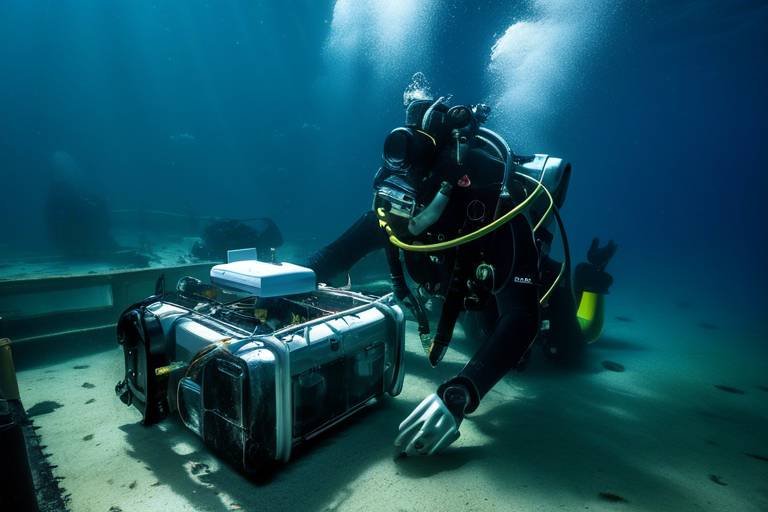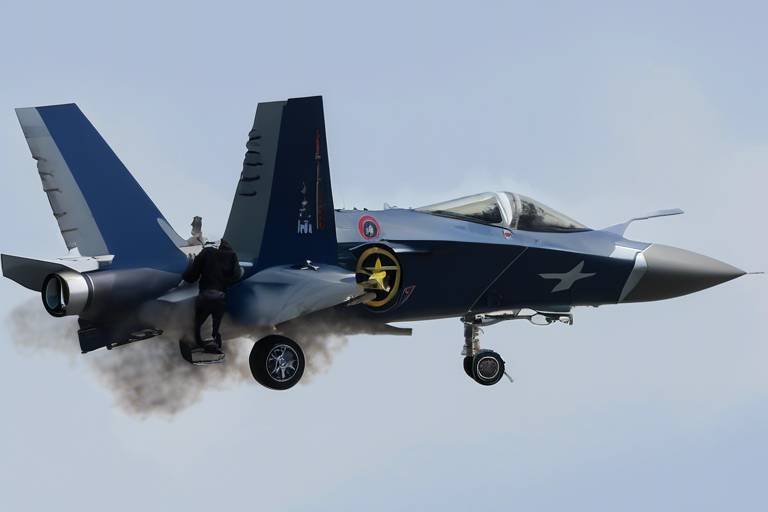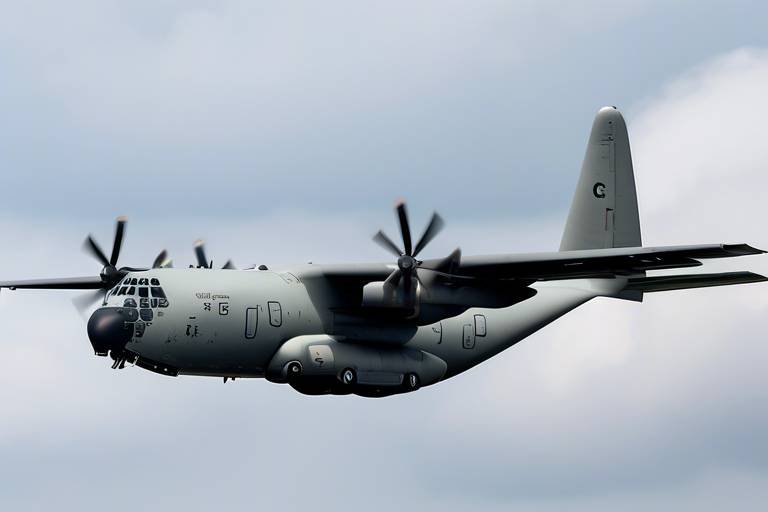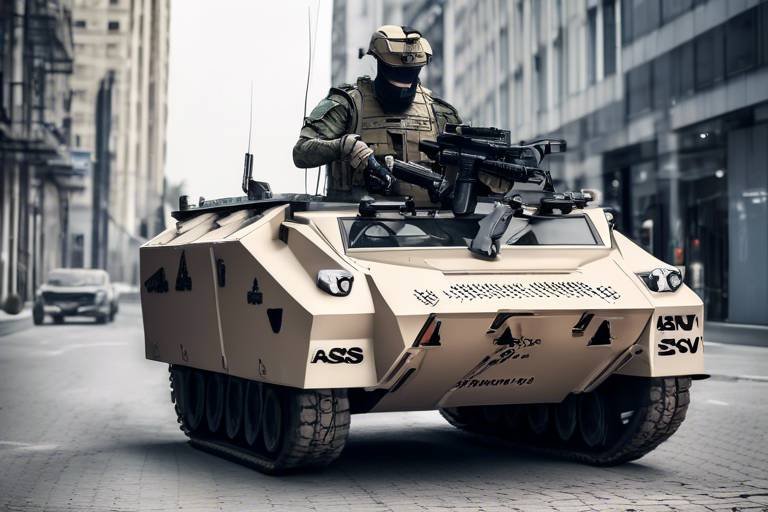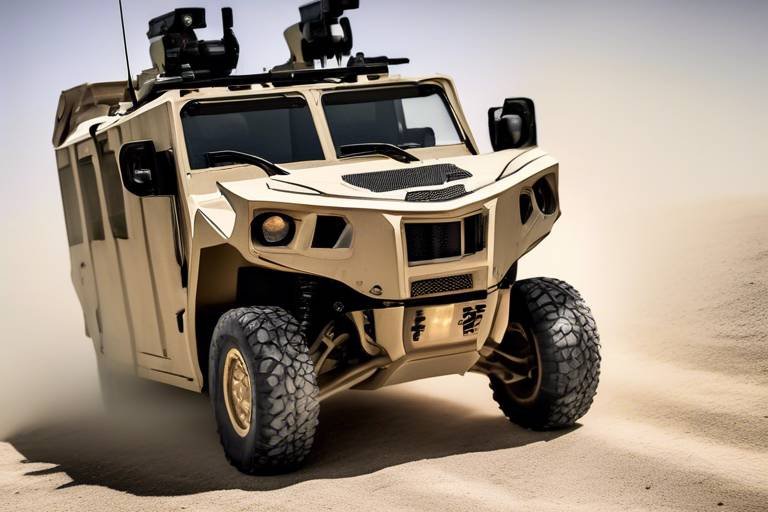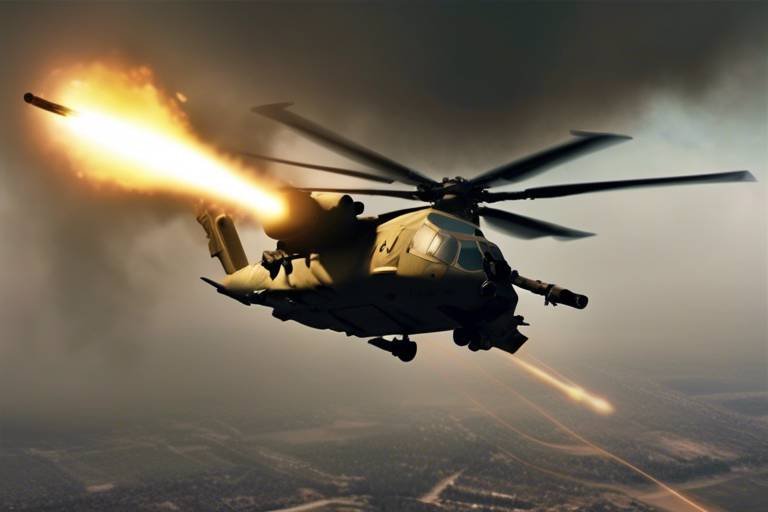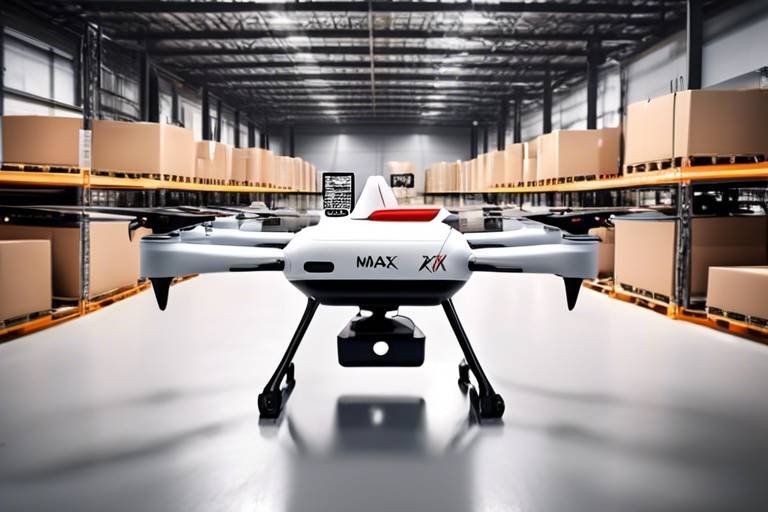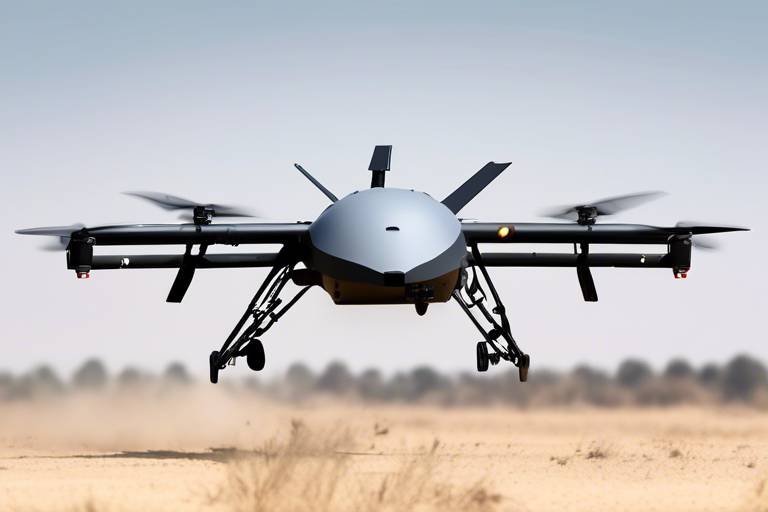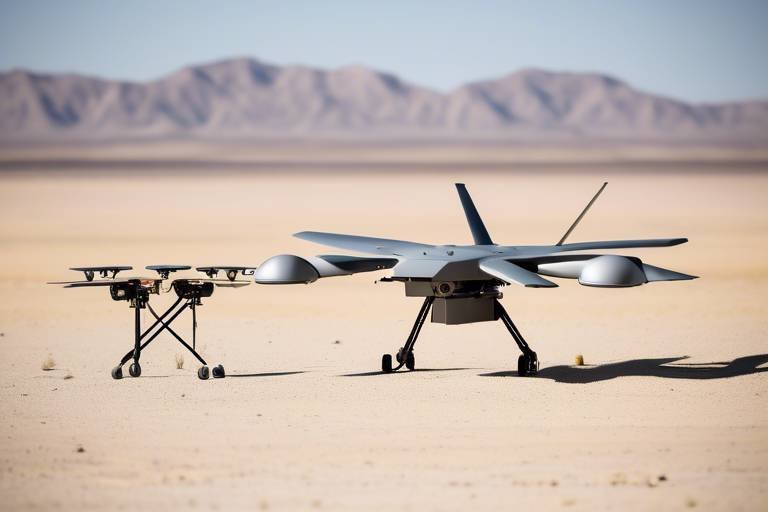Analyzing the Effectiveness of the ROVs in Underwater Recovery Operations
In the ever-evolving world of underwater exploration, Remotely Operated Vehicles (ROVs) have emerged as game-changers, revolutionizing recovery operations beneath the waves. Imagine being able to send a sophisticated machine into the depths of the ocean, where human divers face insurmountable challenges. That’s precisely what ROVs do—they allow us to explore, recover, and analyze underwater environments that were once deemed unreachable. This article delves into the multifaceted role of ROVs in underwater recovery operations, assessing their capabilities, advantages, limitations, and the cutting-edge technology that enhances their effectiveness in challenging environments.
ROVs are marvels of modern engineering, designed specifically for underwater exploration and recovery tasks. These unmanned vehicles are equipped with a variety of components that allow them to navigate, observe, and interact with their surroundings. Typically, an ROV consists of a sturdy frame, thrusters for movement, cameras for visual feedback, and an array of sensors that gather crucial data. The operational principle is quite simple yet effective: ROVs are controlled remotely, allowing operators to maneuver them through the depths while remaining safely on the surface or aboard a vessel. This innovative technology not only extends our reach into the ocean but also significantly enhances the safety and efficiency of recovery operations.
When it comes to underwater recovery operations, ROVs offer an impressive array of advantages that make them indispensable tools. First and foremost, they significantly increase safety for human divers. By taking on the most perilous tasks, ROVs reduce the need for divers to enter hazardous environments, thereby minimizing the risk of accidents. Furthermore, ROVs can operate for extended periods without the fatigue that human divers would experience, making them ideal for prolonged missions.
One of the standout features of ROVs is their enhanced safety capabilities. These vehicles are designed to operate in extreme conditions, including deep-sea environments where pressure and darkness pose significant risks. By performing tasks without direct human intervention, ROVs protect operators from potential dangers such as underwater currents, low visibility, and the presence of hazardous materials. It's like having a superhero at your disposal—one that can dive into danger while you stay safe on the surface.
The remote operation capabilities of ROVs are what truly set them apart. Operators can control these vehicles from a safe distance, using sophisticated controls and monitoring systems. This means that during recovery missions in hazardous underwater conditions, the risk of accidents is drastically reduced. Imagine trying to navigate through a wreck site filled with debris and strong currents; ROVs make this daunting task manageable, allowing operators to focus on the mission rather than their safety.
Another critical advantage of ROVs is their ability to transmit data in real-time. This feature is essential during recovery operations, as it enables operators to make informed decisions based on live video feeds and sensor data. Whether it’s assessing the condition of a submerged object or identifying potential hazards, real-time data transmission ensures that operators are always one step ahead. It’s akin to having a pair of eyes in the depths, providing clarity and insight where human vision fails.
While ROVs are incredibly effective tools, they are not without their limitations. One major drawback is their operational depth restrictions. Most ROVs can only reach certain depths before their functionality is compromised. Additionally, technical failures can occur, whether due to mechanical issues or communication breakdowns, which can hinder operations. Furthermore, maneuvering in complex underwater environments can be challenging, as ROVs may struggle to navigate around obstacles or in tight spaces.
ROVs are not just for exploring the ocean floor; they have a wide range of applications in various recovery operations. From search and rescue missions to archaeological explorations, these vehicles have proven their worth time and time again. Their ability to operate in challenging conditions makes them ideal for locating missing persons or vessels and recovering lost objects from the depths of the ocean.
In search and rescue operations, ROVs play a vital role in locating missing persons or vessels. Their advanced cameras and sensors can cover vast areas quickly, providing valuable information that can save lives. Imagine a scenario where a boat capsizes in rough waters; ROVs can be deployed to search the surrounding area, offering real-time updates to rescue teams and significantly increasing the chances of a successful recovery.
ROVs are also instrumental in archaeological underwater recovery. They allow researchers to document and recover artifacts from shipwrecks and submerged sites without disturbing the delicate environment. Think of them as underwater archaeologists, meticulously exploring the past while preserving history for future generations. Their ability to capture high-definition images and gather data ensures that no detail goes unnoticed, making them invaluable in the field of underwater archaeology.
- What are ROVs used for? ROVs are primarily used for underwater exploration, recovery operations, search and rescue missions, and archaeological research.
- How deep can ROVs operate? The operational depth of ROVs varies by model, but many can reach depths of up to 3,000 meters or more.
- Are ROVs safe to use? Yes, ROVs significantly enhance safety by reducing the need for human divers to enter hazardous underwater environments.
- How do ROVs transmit data? ROVs use advanced communication systems to transmit real-time video and sensor data back to operators on the surface.

Introduction to ROV Technology
Remotely Operated Vehicles, commonly known as ROVs, are fascinating marvels of modern technology designed specifically for underwater exploration and recovery. Imagine sending a robotic ally into the depths of the ocean, far beyond where human divers can safely venture. These vehicles are equipped with an array of sophisticated tools and sensors that enable them to perform a variety of tasks, from inspecting underwater structures to recovering lost treasures from the ocean floor.
At their core, ROVs consist of several key components that work together to facilitate their operations. The main elements include:
- Hull: The durable outer shell that protects the internal components from high pressure and corrosive seawater.
- Propulsion System: Multiple thrusters that provide maneuverability and control, allowing the ROV to navigate through complex underwater environments.
- Cameras and Sensors: High-definition cameras and various sensors that capture real-time data, enabling operators to assess conditions and make informed decisions.
- Control System: A sophisticated system that allows operators to remotely pilot the ROV, often from a ship or a control center on land.
- Manipulator Arms: Robotic arms that can be used to grasp, manipulate, and recover objects from the ocean floor.
The operational principles of ROVs are equally impressive. They are tethered to a surface vessel via a cable, which provides power and allows for the transmission of data back to the operators. This tethered design ensures that the ROV can operate at significant depths, often reaching thousands of meters below the surface, where human divers would be at extreme risk due to pressure and darkness.
One of the most exciting aspects of ROV technology is its versatility. These vehicles can be customized with various tools and equipment depending on the mission requirements. For example, some ROVs are outfitted with sonar systems for mapping the seafloor, while others may have specialized tools for cutting or welding underwater. This adaptability makes ROVs invaluable in a range of industries, including marine research, oil and gas exploration, and search and recovery operations.
As technology continues to advance, the capabilities of ROVs are expected to expand even further. Innovations in artificial intelligence and machine learning could soon enable ROVs to perform tasks autonomously, reducing the need for constant human oversight and opening up new possibilities for underwater exploration.
In conclusion, ROV technology represents a significant leap forward in our ability to explore and recover in underwater environments. With their robust design, advanced sensors, and remote operation capabilities, ROVs are not just tools; they are our eyes and hands in the mysterious depths of the ocean, making the impossible seem possible.
- What is the maximum depth an ROV can reach? Most ROVs can operate at depths ranging from 300 meters to over 6,000 meters, depending on their design and purpose.
- How are ROVs controlled? ROVs are typically controlled via a tether from a surface vessel, allowing operators to pilot them using a joystick and monitor real-time video feeds.
- Are ROVs used for commercial purposes? Yes, ROVs are widely used in various industries, including oil and gas, marine research, and underwater construction.
- What kind of data can ROVs collect? ROVs can collect video footage, sonar images, temperature readings, and other environmental data to support research and recovery efforts.

Advantages of Using ROVs
When it comes to underwater recovery operations, the advantages of using Remotely Operated Vehicles (ROVs) are nothing short of revolutionary. These technological marvels have transformed the way we explore and recover objects from the depths of the ocean. One of the most significant benefits of ROVs is the enhanced safety they provide for human divers. By taking on the risky tasks associated with deep-sea exploration, ROVs allow operators to remain safely on the surface, far removed from the potential dangers lurking below.
Imagine being able to send a robot into the depths of the ocean, equipped with cameras and tools, while you monitor its progress from a cozy control room. This is not just a dream; it's a reality thanks to ROVs! The ability to operate these vehicles remotely means that human operators can avoid the perils of deep-sea diving, such as pressure-related injuries, hypothermia, and encounters with dangerous marine life. Moreover, ROVs can work tirelessly for extended periods, far exceeding the endurance of human divers. This means that recovery operations can be completed more efficiently, saving both time and resources.
Another key advantage lies in their ability to access difficult-to-reach locations. The ocean is a vast and complex environment, filled with underwater caves, shipwrecks, and other challenging terrains that are often inaccessible to divers. ROVs are designed to navigate these tricky spots with ease. Equipped with advanced propulsion systems and maneuverability features, they can glide through tight spaces and around obstacles, capturing high-definition video and collecting samples without putting human lives at risk.
For example, during a recent recovery operation, an ROV was deployed to explore a submerged cave system that was deemed too dangerous for divers. The ROV successfully mapped the area, identified potential hazards, and even retrieved valuable artifacts—all while keeping the human crew safe on the surface. This is just one of many instances where ROVs have proven their worth in challenging underwater scenarios.
Safety is paramount in any recovery operation, and ROVs come equipped with a variety of features designed to protect human operators. These include robust construction materials that can withstand extreme pressures, as well as fail-safe systems that ensure the vehicle can be retrieved even in the event of a malfunction. Furthermore, ROVs often have built-in sensors and cameras that provide real-time feedback to operators, allowing for immediate adjustments to be made if necessary.
The remote operation capabilities of ROVs are a game-changer in underwater recovery. Operators can control these vehicles from the safety of a surface vessel using a combination of joysticks and computer interfaces. This not only minimizes the risk of accidents but also allows for precise maneuvering in complex underwater environments. Imagine having the ability to guide a vehicle through a shipwreck, inspecting every nook and cranny without ever getting wet!
One of the standout features of ROVs is their ability to transmit data in real-time. This allows operators to make informed decisions based on live video feeds and sensor data during recovery operations. Real-time data transmission is crucial for assessing the condition of submerged objects, evaluating the environment, and ensuring that the recovery process is executed smoothly. With this technology, operators can react instantly to any changes or challenges that arise, making ROVs incredibly effective in dynamic underwater settings.
In summary, the advantages of using ROVs in underwater recovery operations are vast and varied. From enhanced safety and extended operational capabilities to the ability to access challenging locations and transmit real-time data, ROVs have become indispensable tools in the field. They not only improve the efficiency of recovery missions but also significantly reduce the risks associated with deep-sea exploration. As technology continues to advance, we can only imagine the even greater capabilities these remarkable vehicles will bring to underwater recovery operations in the future.
- What are ROVs used for? ROVs are primarily used for underwater exploration, recovery operations, search and rescue missions, and scientific research.
- How deep can ROVs operate? The operational depth of ROVs varies depending on their design, but many can operate at depths of over 3,000 meters.
- Are ROVs expensive to operate? While the initial investment in ROV technology can be high, their ability to reduce risks and improve efficiency often justifies the cost.
- Can ROVs be used in harsh conditions? Yes, ROVs are designed to withstand harsh underwater conditions, including extreme temperatures and high pressure.

Enhanced Safety Features
When it comes to underwater recovery operations, safety is a paramount concern. This is where Remotely Operated Vehicles (ROVs) truly shine, as they are equipped with a variety of enhanced safety features designed to protect both the operators and the mission itself. Imagine sending a robot into the depths of the ocean, where human divers would face immense pressure, frigid temperatures, and potential hazards from underwater currents. ROVs serve as the unsung heroes, allowing us to explore and operate in these treacherous environments without putting lives at risk.
One of the key advantages of ROVs is their ability to perform tasks without direct human intervention, which significantly reduces the risk of accidents. For instance, ROVs can be deployed to conduct inspections or recover objects from the seabed, all while being controlled from the safety of a surface vessel. This remote operation capability is not just a convenience; it’s a game-changer for safety in deep-sea missions. Operators can maintain a safe distance from potential dangers, such as underwater debris or unstable structures, which could pose a threat to human life.
Additionally, ROVs are equipped with advanced sensors and cameras that provide real-time data transmission. This means that operators can monitor the situation as it unfolds, making informed decisions based on live video feeds and sensor data. This capability is crucial, especially in emergency scenarios where every second counts. By having a clear view of the underwater environment, operators can adjust their strategies on the fly, ensuring that the mission proceeds smoothly and safely.
Moreover, ROVs are designed with robust construction materials that can withstand high pressures and corrosive marine environments. This durability not only protects the ROV itself but also ensures that the equipment used for recovery operations remains intact and functional. The incorporation of fail-safes and redundant systems further enhances safety. In the event of a technical failure, these systems can take over, allowing the ROV to continue its mission or safely return to the surface.
In summary, the enhanced safety features of ROVs make them an invaluable asset in underwater recovery operations. They allow for effective and safe exploration of the ocean's depths while minimizing risks to human divers. As technology continues to evolve, we can expect even more sophisticated safety protocols and features to be integrated into ROV systems, paving the way for safer and more efficient underwater operations.
- What are ROVs used for? ROVs are primarily used for underwater exploration, recovery operations, inspections, and research in environments that are too dangerous for human divers.
- How deep can ROVs operate? The operational depth of ROVs varies, but many can reach depths of over 3,000 meters, depending on their design and capabilities.
- Are ROVs equipped with cameras? Yes, most ROVs are equipped with high-definition cameras that provide real-time video feeds to operators during missions.
- Can ROVs perform tasks autonomously? Some advanced ROVs have autonomous capabilities, allowing them to perform specific tasks without direct human control.

Remote Operation Capabilities
One of the defining features of Remotely Operated Vehicles (ROVs) is their . This technology allows operators to control these underwater machines from the safety of a vessel or even from hundreds of miles away. Imagine being able to explore the depths of the ocean without ever getting wet! This is not just a fantasy; it’s the reality of modern underwater recovery operations.
The remote operation of ROVs is facilitated through advanced control systems that include high-definition cameras, powerful lights, and various sensors. These components work in harmony to provide operators with a comprehensive view of the underwater environment. With the help of real-time video feeds, operators can navigate the ROV through complex underwater terrains, making it easier to locate objects or conduct inspections. This level of control is akin to playing a video game, but the stakes are much higher, as the mission often involves critical recovery tasks.
Additionally, the ability to control ROVs remotely drastically reduces the risks associated with deep-sea diving. Human divers face numerous hazards, including extreme pressure, cold temperatures, and the potential for encountering dangerous marine life. By utilizing ROVs, we can keep our divers safe while still achieving our recovery objectives. Furthermore, the remote operation allows for extended operational hours without the fatigue that human divers would experience. While a diver might need to surface after a couple of hours, an ROV can operate for much longer periods, maximizing the efficiency of recovery missions.
However, it’s essential to recognize that remote operation comes with its own set of challenges. For instance, operators must be highly trained to manage the ROV effectively, as the underwater environment can be unpredictable. Factors such as strong currents, low visibility, and complex underwater structures can complicate operations. Nevertheless, with the right training and experience, operators can master these challenges, ensuring successful missions.
In summary, the remote operation capabilities of ROVs not only enhance the safety of underwater recovery operations but also improve efficiency and effectiveness. As technology continues to advance, we can expect even more sophisticated control systems that will further revolutionize how we conduct underwater exploration and recovery.
- What is an ROV? A Remotely Operated Vehicle (ROV) is an unmanned robot used to explore underwater environments, often equipped with cameras and sensors for data collection.
- How deep can ROVs operate? The operational depth of ROVs varies by model, but many can reach depths of over 6,000 meters, making them suitable for deep-sea exploration.
- Are ROVs safe to use? Yes, ROVs are designed to operate in hazardous environments, reducing the risks to human divers and allowing for safer recovery operations.
- What types of missions can ROVs perform? ROVs are versatile and can be used for search and rescue missions, archaeological explorations, environmental monitoring, and more.

Real-Time Data Transmission
When it comes to underwater recovery operations, is a game-changer. Imagine being in a dark, murky environment, thousands of feet below the surface, and having the ability to see exactly what’s happening in real-time. That’s what ROVs bring to the table. Equipped with high-definition cameras and advanced sensors, these vehicles can stream live video and data back to operators on the surface. This capability allows for immediate assessment and decision-making, which is crucial in emergency situations.
Consider the scenario of a search and rescue mission. Time is of the essence, and every second counts. With real-time data transmission, operators can monitor the ROV's movements and the conditions of the underwater environment, making adjustments on the fly. For instance, if the ROV encounters an unexpected obstacle, the operator can quickly change its course or adjust its depth without losing precious time. This adaptability significantly enhances the chances of a successful recovery.
Moreover, the integration of sensor technology plays a vital role in real-time data transmission. ROVs can be equipped with various sensors that measure temperature, pressure, and even chemical compositions of the water. This data is transmitted back to the surface, allowing operators to gauge the environmental conditions and make informed decisions. For example, if the water temperature is significantly lower than expected, it might indicate the presence of a submerged object that needs further investigation.
To illustrate the impact of real-time data transmission, let’s take a look at a comparison of traditional recovery methods versus ROV-assisted operations in terms of efficiency:
| Factor | Traditional Methods | ROV-Assisted Methods |
|---|---|---|
| Time Taken for Recovery | Hours to Days | Minutes to Hours |
| Operator Safety | High Risk | Low Risk |
| Data Accuracy | Delayed Analysis | Immediate Feedback |
This table clearly demonstrates how ROVs, with their real-time data transmission capabilities, streamline the recovery process and enhance operational safety. The immediate feedback loop created by live data not only saves time but also minimizes risks associated with underwater operations.
In conclusion, real-time data transmission is not just a technological feature; it’s a critical component that enhances the effectiveness of ROVs in underwater recovery operations. By providing operators with immediate access to live data and video feeds, ROVs are revolutionizing the way we approach underwater exploration and recovery, making it safer and more efficient than ever before.
- What is an ROV? A Remotely Operated Vehicle (ROV) is an unmanned, remote-controlled robot used for underwater exploration and recovery tasks.
- How does real-time data transmission work in ROVs? ROVs are equipped with cameras and sensors that send live video and data back to operators on the surface, allowing for immediate assessment and decision-making.
- What are the advantages of using ROVs over traditional diving methods? ROVs increase safety, reduce the time required for recovery, and provide immediate data feedback, making operations more efficient.
- Can ROVs operate in extreme depths? While ROVs can operate at significant depths, each model has its own depth limitations based on design and technology.

Limitations of ROVs
While Remotely Operated Vehicles (ROVs) have revolutionized underwater recovery operations, they are not without their limitations. Understanding these constraints is crucial for operators and stakeholders involved in underwater missions. One of the primary challenges faced by ROVs is their operational depth restrictions. Most ROVs are designed for specific depth ranges, and exceeding these limits can lead to catastrophic failures. For instance, the pressure at significant depths can crush the vehicle's structure, rendering it useless and potentially jeopardizing the mission.
In addition to depth limitations, ROVs can also experience technical failures. These failures can arise from various factors, including equipment malfunctions, software glitches, or even environmental conditions such as strong currents and poor visibility. The underwater environment can be unpredictable, and just like any piece of technology, ROVs are susceptible to breakdowns. Consider a scenario where an ROV is deployed to recover a sunken vessel, but halfway through the mission, it encounters a technical issue. The time and resources wasted in such situations can be significant.
Another substantial challenge is the maneuverability of ROVs in complex underwater environments. Navigating through tight spaces, avoiding obstacles, and managing strong currents can be quite tricky. Unlike divers who can physically swim and adjust their positions, ROVs are limited by their thrusters and control systems, which may not always provide the agility needed in challenging terrains. For example, when attempting to recover artifacts from a shipwreck surrounded by debris, an ROV might struggle to maneuver effectively, leading to delays and potential damage to both the vehicle and the site.
Moreover, the cost of ROV operations can be quite high. The initial investment in ROV technology, coupled with maintenance and operational expenses, can deter smaller organizations or individual operators from utilizing them. In many cases, specialized training is also required for operators to effectively control and troubleshoot ROVs, adding another layer of expense and complexity to the operation.
Finally, it's essential to acknowledge that ROVs are dependent on human oversight. Even though they are designed to operate remotely, skilled operators are necessary to monitor their performance, make real-time decisions, and respond to unforeseen circumstances. This human element, while beneficial, can also introduce a point of failure, as operators may become fatigued or overwhelmed during long missions.
In summary, while ROVs have transformed underwater recovery operations, they come with their own set of limitations that can impact their effectiveness. From depth restrictions and technical failures to maneuverability challenges and high operational costs, these factors must be carefully considered when planning underwater missions. As technology advances, it is hoped that many of these limitations will be addressed, paving the way for even more efficient and effective underwater recovery solutions.
- What are the primary limitations of ROVs? ROVs face challenges such as operational depth restrictions, technical failures, maneuverability issues, high costs, and dependence on human oversight.
- Can ROVs operate at any depth? No, each ROV is designed for specific depth ranges, and exceeding those limits can lead to equipment failure.
- How expensive is it to operate an ROV? The costs can vary widely depending on the type of ROV, mission complexity, and required training for operators.
- What happens if an ROV experiences a technical failure? If an ROV fails during a mission, it can result in significant delays and resource waste, and in some cases, it may be unrecoverable.

ROV Applications in Recovery Operations
Remotely Operated Vehicles (ROVs) have revolutionized the way we conduct underwater recovery operations. Their versatility and advanced technology allow them to be employed in a variety of critical scenarios, making them an invaluable asset in today's maritime and underwater exploration landscapes. From search and rescue missions to archaeological digs, ROVs have proven their effectiveness time and time again.
One of the most prominent applications of ROVs is in search and rescue missions. When a vessel goes missing or a person is lost at sea, time is of the essence. ROVs can be deployed quickly, often in conditions that would be too dangerous for human divers. Equipped with high-definition cameras and sonar systems, these vehicles can navigate murky waters and challenging underwater terrains to locate missing individuals or wreckage. Their ability to operate at depths that are often unreachable by traditional diving methods makes them a crucial tool in emergency response efforts.
In addition to their role in search and rescue, ROVs are also extensively used in archaeological and historical recovery. Underwater archaeology presents unique challenges, as artifacts are often found in delicate conditions on the ocean floor. ROVs can carefully document these sites without disturbing the sediment or the artifacts themselves. With their precise maneuverability, ROVs can capture high-resolution images and video footage, allowing archaeologists to study and analyze underwater sites remotely. This capability is not only crucial for preserving historical integrity but also for educating the public about our maritime heritage.
Moreover, ROVs are instrumental in the recovery of lost objects, such as cargo, equipment, or even downed aircraft. The ability to operate in extreme conditions, coupled with advanced gripping and manipulation tools, allows ROVs to retrieve items that would otherwise be impossible to access. For instance, in the case of a sunken ship, ROVs can be used to locate and recover valuable cargo while minimizing environmental impact. The table below highlights some key applications of ROVs in recovery operations:
| Application | Description |
|---|---|
| Search and Rescue | Locating missing persons or vessels in challenging underwater conditions. |
| Archaeological Recovery | Documenting and recovering artifacts from shipwrecks and submerged sites. |
| Object Recovery | Retrieving lost cargo or equipment from the ocean floor. |
As we look to the future, the applications of ROVs will only expand. Innovations in technology, such as improved battery life, enhanced imaging systems, and artificial intelligence, are set to enhance the capabilities of ROVs even further. This means that not only will ROVs continue to be pivotal in recovery operations, but they will also pave the way for new methods of exploration and conservation in our oceans.
- What are ROVs used for?
ROVs are primarily used for underwater exploration, search and rescue operations, archaeological recovery, and the retrieval of lost objects. - How deep can ROVs operate?
The operational depth of ROVs varies depending on their design, but many can function at depths exceeding 3,000 meters. - Are ROVs safe for underwater recovery?
Yes, ROVs are designed to operate in hazardous conditions, reducing the risk to human divers and allowing for safer recovery operations.

Search and Rescue Missions
When it comes to , the stakes couldn't be higher. Lives are often on the line, and time is of the essence. This is where Remotely Operated Vehicles (ROVs) shine like beacons in the murky depths of the ocean. These remarkable machines are designed to navigate the most treacherous underwater environments, providing critical support in locating missing persons or vessels. Imagine being able to explore the depths of the ocean without putting human lives at risk—this is the reality that ROV technology brings to the table.
ROVs are equipped with advanced sensors and cameras that allow operators to conduct thorough searches from a safe distance. With the ability to transmit real-time video feeds, operators can assess situations as they unfold, making quick decisions that could mean the difference between life and death. The high-definition cameras on ROVs can capture detailed images, allowing for better identification of objects or individuals that may be submerged.
In search and rescue operations, every second counts. ROVs can be deployed rapidly, often faster than traditional dive teams can prepare. They can reach depths that would take human divers much longer to access, especially in conditions where visibility is poor or currents are strong. This capability is vital when time is of the essence, such as in cases where a vessel has capsized or a person has gone missing in the water.
Moreover, ROVs are not just about speed; they also provide a level of safety that is unparalleled. Human divers face numerous dangers, including decompression sickness, hypothermia, and encounters with dangerous marine life. By utilizing ROVs, rescue teams can mitigate these risks significantly. The ROV can perform initial assessments and gather information before any divers are sent into the water, ensuring that the environment is as safe as possible.
To illustrate the effectiveness of ROVs in search and rescue missions, consider the following table that highlights key advantages:
| Advantage | Description |
|---|---|
| Speed of Deployment | ROVs can be quickly launched, reducing response time in emergencies. |
| Safety | Minimizes risk to human divers by performing initial assessments. |
| Real-Time Data | Live video feeds allow for immediate decision-making during operations. |
| Access to Depths | Can reach depths and locations that are unsafe or impossible for divers. |
Additionally, ROVs can be equipped with specialized tools for recovery, such as robotic arms that can grasp and lift objects from the ocean floor. This capability is particularly useful in scenarios where a vessel has sunk, and the recovery of important evidence or even the vessel itself is necessary. The versatility of ROVs makes them indispensable in modern search and rescue operations.
In conclusion, the integration of ROV technology into search and rescue missions has revolutionized how we approach underwater emergencies. With their ability to operate in challenging conditions, provide real-time data, and enhance the safety of human divers, ROVs are proving to be a game-changer. As technology continues to advance, we can only expect these vehicles to become even more effective, making our oceans a safer place for everyone.
- How deep can ROVs operate? Most ROVs can operate at depths ranging from a few hundred feet to several thousand feet, depending on their design and purpose.
- What types of sensors do ROVs use? ROVs are typically equipped with cameras, sonar systems, and environmental sensors to gather data and navigate underwater.
- Can ROVs recover objects from the ocean floor? Yes, many ROVs are equipped with robotic arms and tools specifically designed for recovery operations.
- How are ROVs controlled? ROVs are controlled remotely via a tether or wireless connection, allowing operators to maneuver them from a safe distance.

Archaeological and Historical Recovery
When we think about the mysteries of the deep blue sea, we often picture ancient shipwrecks and lost civilizations waiting to be discovered. Remotely Operated Vehicles (ROVs) have revolutionized the way we explore these underwater treasures, making archaeological and historical recovery not only possible but also efficient. Imagine being able to peer into the past without even getting your feet wet! ROVs are equipped with advanced cameras and sensors that allow archaeologists to document and recover artifacts that have been lying undisturbed for centuries.
The ability of ROVs to operate at significant depths opens up a world of possibilities. For instance, many historical sites are submerged under layers of sediment or are located in challenging underwater terrains. ROVs can navigate through these environments with precision, capturing high-resolution images and videos that provide invaluable data for researchers. This is particularly important in archaeological contexts, where the condition and context of artifacts can offer insights into historical events and cultures.
One of the most remarkable aspects of using ROVs in archaeological recovery is their non-invasive approach. Traditional diving methods can sometimes disturb delicate sites, but ROVs can conduct assessments and recover items without causing significant disruption. This is crucial for preserving the integrity of historical sites. For example, ROVs have been instrumental in exploring shipwrecks, allowing archaeologists to map the site and recover items such as pottery, tools, and personal belongings without disturbing the surrounding area.
Moreover, ROVs can operate for extended periods, which is a game-changer for underwater archaeology. While human divers are limited by time and depth, ROVs can be deployed for hours or even days at a time, allowing for comprehensive exploration and documentation. This capability is particularly beneficial for large sites that require extensive surveying. With real-time data transmission, archaeologists can analyze the findings as they come in, making quick decisions about where to focus their efforts next.
| Advantages of ROVs in Archaeological Recovery | Description |
|---|---|
| Non-Invasive Exploration | Minimizes disturbance to archaeological sites while allowing for thorough examination. |
| Extended Operational Time | Can operate for longer periods than human divers, enabling detailed surveys. |
| Real-Time Data Capture | Provides immediate access to visual and sensor data for informed decision-making. |
| Access to Difficult Locations | Can reach areas that are too dangerous or deep for human divers. |
In conclusion, the integration of ROV technology into archaeological and historical recovery operations has opened up new frontiers in our quest to understand the past. As we continue to refine these technologies, the potential for uncovering lost artifacts and historical narratives becomes even greater. The deep sea, once a realm of mystery, is now becoming a treasure trove of knowledge thanks to the capabilities of ROVs.
- What are ROVs used for in archaeology? ROVs are used to explore underwater sites, document findings, and recover artifacts without disturbing the surrounding environment.
- How deep can ROVs operate? ROVs can operate at significant depths, often exceeding 3,000 meters, depending on their design and capabilities.
- Are ROVs safe for archaeological recovery? Yes, ROVs enhance safety by allowing operations to be conducted remotely, reducing risks associated with deep-sea diving.
- What kind of data can ROVs collect? ROVs can collect high-resolution images, video footage, and various sensor data to aid in archaeological assessments.
Frequently Asked Questions
- What are ROVs and how do they work?
Remotely Operated Vehicles (ROVs) are specialized underwater robots designed for exploration and recovery tasks. They are controlled from a distance using a tether or wireless connection, allowing operators to maneuver them through challenging underwater environments. Equipped with cameras, lights, and various tools, ROVs can perform tasks like inspecting shipwrecks or retrieving lost objects without putting human divers at risk.
- What are the primary advantages of using ROVs in underwater recovery operations?
ROVs offer several key advantages, including enhanced safety for divers, extended operational time, and the ability to access difficult-to-reach locations. By utilizing ROVs, teams can conduct operations in hazardous conditions without exposing human life to potential dangers like strong currents or deep-sea pressure.
- How do ROVs enhance safety during underwater operations?
ROVs are equipped with advanced safety features that allow them to operate without direct human intervention. This means that in dangerous situations, operators can control the ROV from a safe distance, significantly reducing the risk of accidents. Additionally, they can be deployed in environments where human divers would face extreme challenges, such as deep-sea wrecks or polluted waters.
- What limitations do ROVs face in underwater recovery?
Despite their many advantages, ROVs have limitations. They may encounter operational depth restrictions, technical failures, and difficulties maneuvering in complex underwater terrains. These challenges can impact their effectiveness in certain recovery missions, making it essential for operators to assess the situation before deployment.
- In what scenarios are ROVs typically used for recovery operations?
ROVs are commonly utilized in various recovery scenarios, including search and rescue missions, archaeological explorations, and the recovery of lost objects from the ocean floor. Their ability to provide real-time data and high-quality visuals makes them invaluable in locating missing vessels or artifacts submerged underwater.
- How do ROVs contribute to archaeological underwater recovery?
In archaeological contexts, ROVs play a crucial role by documenting and recovering artifacts from shipwrecks and submerged sites. They can navigate delicate environments with precision, capturing detailed imagery and data that help researchers understand historical events and preserve cultural heritage.

